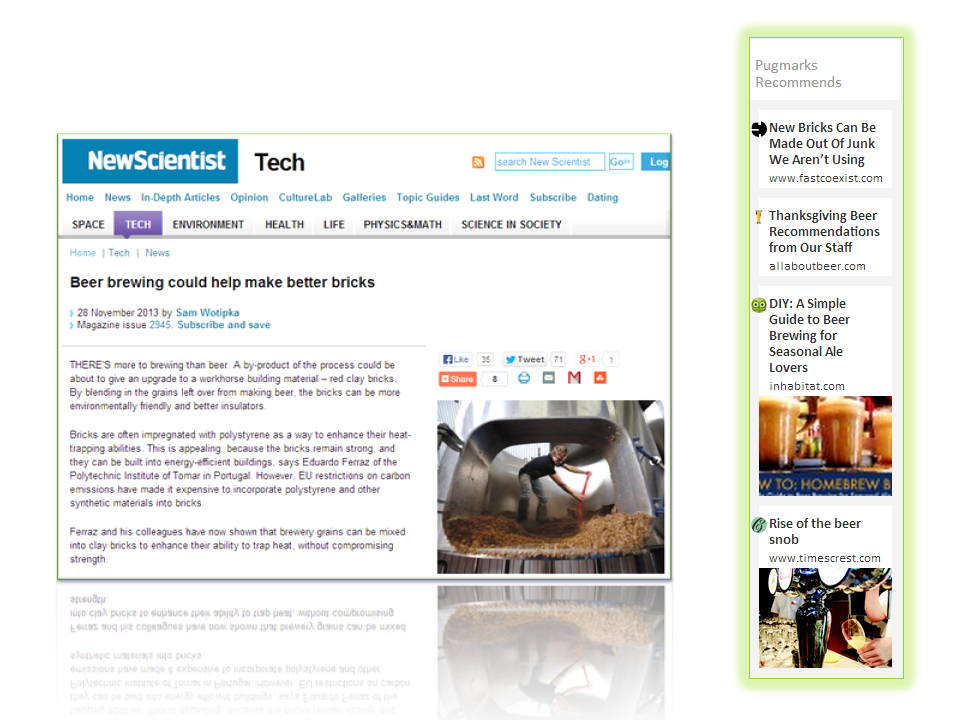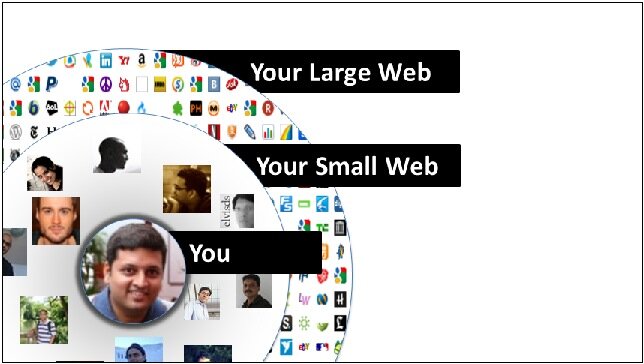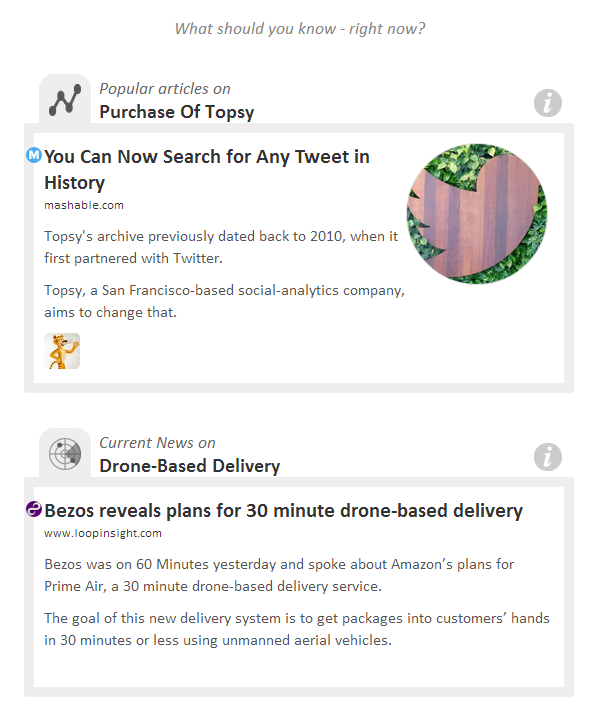 From opening an article, to recommendations showing up on the Home Screen, there's a full round trip to the cloud, search among millions of articles and deduction of the most relevant reading cards that deserve to show up on the Home Screen. All of this in just a couple of seconds. "The life of a visit" documents some of the things that happen Under the Hood.
From opening an article, to recommendations showing up on the Home Screen, there's a full round trip to the cloud, search among millions of articles and deduction of the most relevant reading cards that deserve to show up on the Home Screen. All of this in just a couple of seconds. "The life of a visit" documents some of the things that happen Under the Hood. 
Imagine a technology and user experience, that understands your mood, your conversation, your current reading, your near meetings - and brings relevant information automatically to you. This is called contextual discovery - something that can anticipate your information needs before you ask.
Pugmarks.me is contextual discovery inside the browser. Our smart browser (for Android and Chome) understands the kind of pages you are reading, and brings high quality recommendations, without you going to Google.
To facilitate value in recommendations, Pugmarks needs to stay close to the user's context. Pugmarks does this, by being an extension on the Chrome browser, and is the Browser itself on Android.
Through events and callbacks on the browser, Pugmarks finds out the address of the page user's are visiting.
Staying in context comes with its responsibilities. Context implies an opportunity to help and annoy at the same time. A wrong recommendation that's made at the wrong time can make users angry. A right recommendation at the right time can result in epiphany. Pugmarks is designed to respect the user, and his habits.
Users visit all kinds of pages. Not all of them are suited for recommendations. In a day, you’ll a user shopping on an eCommerce site, checking the bank balance, booking tickets for movies, storing files on a cloud drive, checking email, calendar, amidst reading favorite sources. Not all pages are recommendations worthy.
Pugmarks uses an extensive set of rules to figure if a page deserves recommendations - from https, the density of form fields, long black lists, unavailability of text, and the media types on the page. Private pages should be off Pugmarks' limits.

On a page that's deemed worthy of recommendations, Pugmarks will send the URL to its servers - through https. Best efforts are made in the backend to clear user state when unnecessary. User state is not mixed with others - but for the sole purpose of improving recommendations. Here's a page that describes our privacy promise.
The word 'context' means a lot. Understanding context refers to the ability to read a user's mind. What is going through his mind, when he is reading this page? Many digital signals are available to decipher some of these:

Pugmarks asks itself several of these questions, in the context of the user and his current state; to bring recommendations that can be useful. This topic is so important us, that we created a special page for contextual discovery. Read More

Assume that there is some understanding of context. Where should Pugmarks look now, for useful information? The Web has long since moved on from being a web of documents. More content flows close to people - through their social media. Often, the most useful information is available close to the user, but hard to retrieve. Search engines like Google do not know what flows in people's Facebook, Twitter and LinkedIn. Facebook, Twitter and LinkedIn are not doing enough to help you discover content relevant to users. Pugmarks has recognized the nature of the web today - and built algorithms and systems to help retrieve good stuff from social media. We call this multi-stream retrieval. Read More
Pugmarks anticipates the kind of news a user needs, based on the signals we gather – from his current and past reading, his social connections, trends in the world. These are delivered as Reading Cards in the Home Screen. 
1) News first: Pugmarks first tries to check if there’s more “news” to that topic (things that have been published recently). A guess is made if this “news” is already known to you. If not, its show-worthy.
2) Trending correlations: If a relevant topic is strongly correlated to something else in the recent times, then the connection is brought to the fore.
3) Popular on topic: Next, it looks for articles that have been popular on the topic. Popular articles are especially useful if the topic is unfamiliar. Popularity is deduced from social media endorsements on that article.
4) References: When a user ventures into a topic that's unfamiliar to him, and his circles - reference pages are presented, to bring the user up to speed.
5) Social search: If no good popular articles are available, Pugmarks looks for interest or endorsements in the user's social circles. If a friend has shared a good one, thats shown – along with his endorsement.